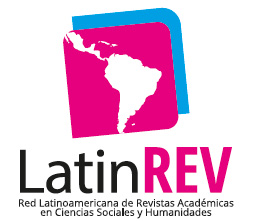The relationship between satisfaction with internal communications and organizational commitment
The case of an Ecuadorian university
Abstract
This article presents the methodology and results of an ongoing investigation into the relationship between satisfaction with internal communications and organizational commitment in an Ecuadorian university. The investigation has a sequential mixed design and is being carried out in three phases across an initial period of two years (from June 2016 to June 2018). The first and already-completed phase seeks to determine the current relationship between satisfaction with internal communications and organizational commitment via three research questions: What is the degree of satisfaction with internal communications? What is the degree of organizational commitment among employees? What relationship is there between internal communications and organizational commitment? Our final goal is to establish the theoretical groundwork for —and find empirical evidence of— the need for organizations and supervisors to focus their efforts on internal communications, improving the support they receive and having employees identify more strongly with their organizations.
Downloads
References
Arcidiácono, F. & De Gregorio, E. (2008). Methodological thinking in psychology: starting from mixed methods. International journal of multiple research approaches, 2 (1), p. 118-126.
Arias-Galicia, F. (2005). El compromiso personal hacia la organización [tesis doctoral]. México: Universidad Nacional Autónoma de México.
Bhal, K. T. & Ansari, M. A. (2007). Leader-member exchange-subordinate outcomes relationship: role of voice and justice. Leadership & organization development journal, 28 (1), p. 20-35.
Barresi, M. (2013). La percepción de la satisfacción con la comunicación interna y sus implicancias en el compromiso organizacional en la Argentina [tesis doctoral]. Buenos Aires: Universidad Austral.
Cameron, R. (2009). A sequential mixed model research design: design, analytical and display issues. International journal of multiple research approaches, 3 (2), p. 140-152.
CONEA (2009). Mandato constituyente No. 14. Evaluación de desempeño institucional de las universidades y escuelas politécnicas del Ecuador. Disponible en: http://www.ceaaces.gob.ec/sitio/wp-content/uploads/2014/02/INFORME_FINAL_UNIVERSIDADES_M141.pdf (consultado: 13 feb. 2017).
Deetz, S. (2001). Conceptual foundations. En: Jablin, F. M. & Putnam, L. L. (eds.). The new handbook of organizational communication: advances in theory, research, and methods (p. 3-46). Thousand Oaks, CA: Sage.
Donsbach, W. (2012). The identity of communication research. Signo y pensamiento, 60, p. 18-29.
Downs, A. (1991). A case study of the relationship between communication satisfaction and organizational commitment in two Australian organizations [tesis]. Lawrence, Kansas: University of Kansas.
Downs, C. & Hazen, M. (1977). A factor analytic study of communication satisfaction. Journal of business communication, 14 (3), p. 63-74.
DuBrin, A. J. (2003). Fundamentos de comportamiento organizacional. Mexico: Cengage Learning Latin America.
Hallberg, U. & Schaufeli, W. (2006). Same same but different?: can work engagement be discriminated from job involvement and organizational commitment? European psychologist, 11 (2), p. 119-127.
Hernández, R.; Fernández, C. & Baptista, M. (2010). Metodología de la investigación. México: McGraw Hill.
Hume, J. & Leonard, A. (2013). Exploring the strategic potential of internal communication in international non-governmental organizations. Public relations review, 40 (2), p. 294-304.
García Jiménez, J. (1998). La comunicación interna. Madrid: Ediciones Díaz de Santos.
Karanges, E.; Beatson, A.; Johnston, K. & Lings, I. (2014). Optimizing employee engagement with internal communication: a social exchange perspective. Journal of business market management, 7 (2), p. 329-353.
Ecuador. Ley Orgánica de Educación Superior No. 865 (2011). Quito: Registro Oficial.
March, J.; Prieto, M.; Danet, A.; Pérez, O. & Martínez, F. (2009). Los directivos hospitalarios y la comunicación interna: una asignatura pendiente. Revista de administración sanitaria siglo XXI, 1, p. 165-182.
Maslach, C.; Schaufeli, W. & Leiter, M.P. (2001). Job burnout. Annual review of psychology, 52, p. 397-422.
Medina Aguerrebere, P. (2012). El valor estratégico de la comunicación interna hospitalaria. Revista de comunicación y salud, 2 (1), p. 19-28.
Meyer, J. & Allen, N. (1991). A three-component conceptualization of organizational commitment. Human resources management review, 1 (1), p. 61-89.
Mishra, K.; Boyton. L. & Mishra, A. (2014). Driving employee: the role of the internal communication. Internal journal of business communication, 51 (2), p. 183-202.
Ojeda, M. E.; Talavera, R. & Berrelleza, M. (2016). Análisis de la relación entre compromiso organizacional y percepción de apoyo organizacional en docentes universitarios. Sistemas, cibernética e informática, 13 (1), p. 66-71.
Palacios, J. (2015). Historia y avances en la investigación en comunicación organizacional. Revista internacional de relaciones públicas, 5 (10), p. 25-46.
Paladines, Y; Valarezo, K. & Yaguache, J. (2013). La comunicación integral, un factor determinante en la gestión de la empresa ecuatoriana. Signo y pensamiento, 32 (63), p. 110-128. Bogotá: Pontificia Universidad Javeriana.
Perona, A. (2003). La asignatura pendiente de la comunicación financiera. Bolsa de Madrid, (117), p. 10-17.
Pertuz Alarcón, M. B. (2015). La comunicación interna en el sector público ecuatoriano: caso Ministerio de Salud Pública [tesis de maestría]. Quito: Universidad Central del Ecuador. Disponible en: http://www.dspace.uce.edu.ec/bitstream/25000/4997/1/T-UCE-0009-451.pdf (consultado: 13 feb. 2017).
Potvin, T. C. (1991). Employee organizational commitment: An examination of its relationship to communication satisfaction and an evaluation of questionnaires designed to measure the construct [tesis doctoral]. Lawrence: University of Kansas
Rodríguez Hernández, C. (2012). Cumplimiento del contrato psicológico y compromiso: el papel mediador de la identificación organizacional [tesis de maestría]. Madrid: Universidad Autónoma de Madrid.
Rosa Navarro, M. D. & Carmona Lavado, A. (2010). Cómo afecta la relación del empleado con el líder a su compromiso con la organización. Universia business review, 2 (26), p. 112-132.
Saladrigas, H. (2005). Comunicación organizacional: matrices teóricas y enfoques comunicativos. Revista latina de comunicación social, 8 (60), p. 1-7.
Serrano, L. (2012). Plan de comunicación para aumentar la satisfacción de los colaboradores desde los canales de comunicación interna en Multibanca Colpatria [tesis doctoral]. Bogotá: Pontificia Universidad Javeriana.
Trombetta, J. J. (1981). A study of the effects of communication climate variables on the satisfaction and commitment of hospital nurses [tesis doctoral]. Buffalo: State University of New York.
Truss, K.; Soane, E.; Edwards, C.; Yvonne L.; Wisdom, K.; Croll, A. & Burnett, J. (2006).
Working life: employee attitudes and engagement 2006. London: Chartered Institute of Personnel and Development (CIPD).
White, C.; Vanc, A. & Stafford, G. (2010). Internal communication, information satisfaction, and sense of community: the effect of personal influence. Journal of public relations research, 22 (1), p. 65-84.
Zimmerman, H. L. (2016). Metanálisis del apoyo organizacional percibido y compromiso organizacional en organizaciones mexicanas. Revista interamericana de psicología ocupacional, 22 (2), p. 45-54.
Copyright (c) 2017 Nicola Wills-Espinosa, María Ileana Cevallos Icaza, Gabriel Sadi, Irene Ancin Adell

This work is licensed under a Creative Commons Attribution-NonCommercial 4.0 International License.
The authors retain the copyright and guarantee the journal the right to be the first publication of the work. In case that a translation of the article already published in Austral Comunicación can be published in another journal, it is requested to record the original publication in the translated version.
The license used is CC BY-NC-SA, which allows sharing (copying and redistributing the material in any medium and format) and adapting (remixing, transforming and building on the material) under the following terms: attribution (acknowledge authorship) and non-commercial (the material cannot be used for commercial purposes). Update: February 1, 2022.
Austral Comunicación allows the author (s) to retain the publication rights without restrictions.











































